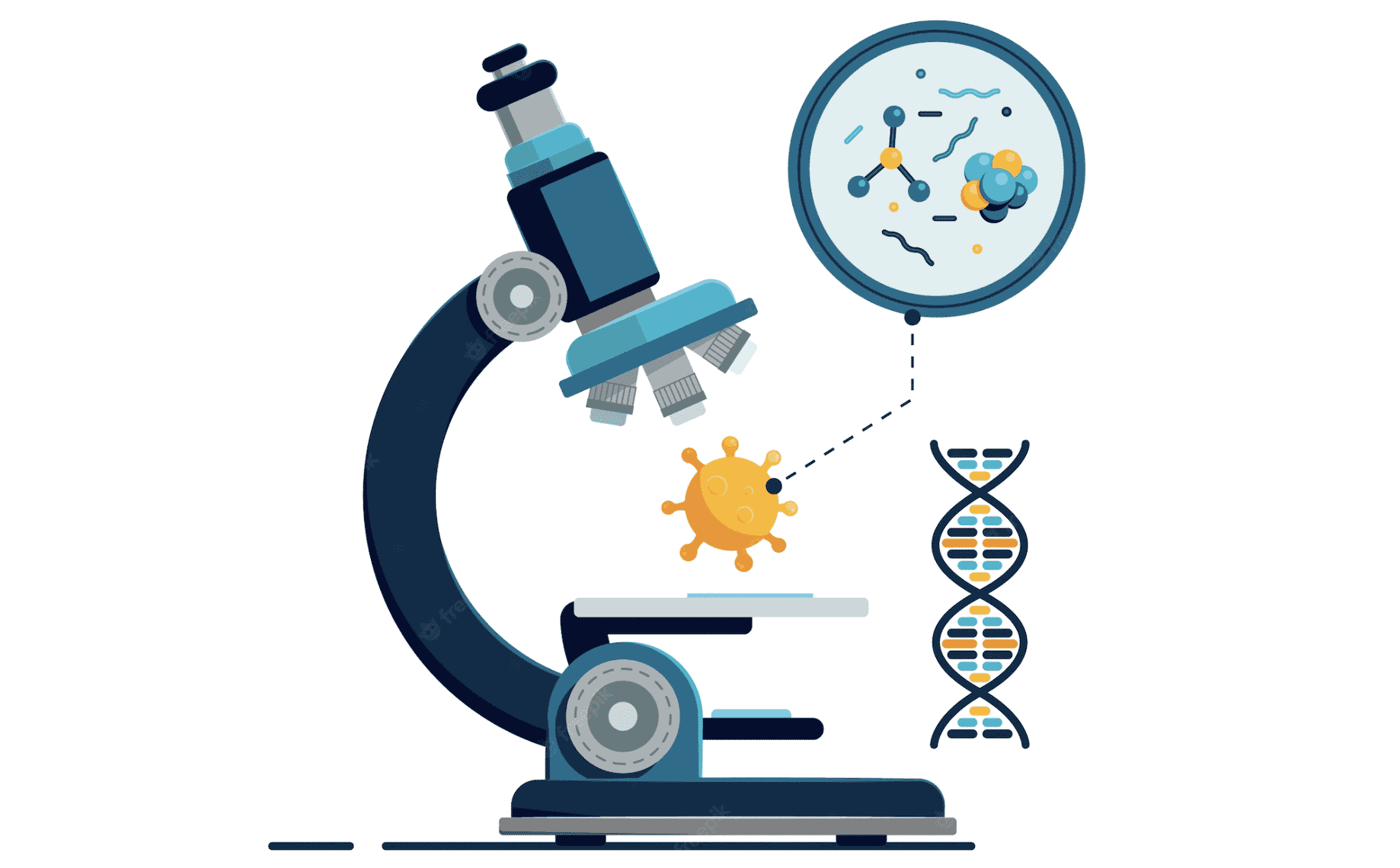
Automated microscopy is increasingly becoming popular in recent years when it comes to processing different types of applications. These are sophisticated applications that require continuous repeated observations to bring out data. Besides, when making these observations, the whole process can take several hours. And, that could challenge a human.
However, automated microscopy in recent times has evolved and has successfully taken over from its predecessor in terms of performance. Now you can have most of the laborious and time-consuming tasks related to microscopic applications conducted through automation. This article on automated microscopy helps you understand every aspect of it in a detailed manner.
Table of contents
Also Read: Is robotics computer science or engineering?
What Is Automated Microscopy?
With the advancement in technology, microscopy evolved as well. As a result, it gives you opportunities to introduce impressive technology that you find in other sectors to make data acquisitions a breeze with improved workflows. Microscope components are altered so that they can support automation and provide you with compelling results.
In addition, the ability to automate several aspects of microscopy tends to offer plenty of benefits when it comes to data acquisition. And, that includes immediate archival of the data resulting from real-time evaluation and analysis. Furthermore, the automation preserve samples within sterile conditions.
These conditions include certain kinds of imbalances or extreme temperatures that might occur in carbon dioxide. The microscope alone captures and visualizes images of the samples and it doesn’t need the touch of a person. As such, the hardware remains the same under those conditions whereas the researcher undertakes the process of data collection while sitting at a safe distance.
Automated microscopy dates back to the 1960s when researchers at Cambridge developed an analyzer that can detect microscope images. Many people were waiting for the technology to make advancements and rival the existing traditional microscopy.
However, it became a reality and the scientific research processes witnessed major development in this field. When the advancement occurred and digital components were incorporated into traditional microscopes, it changed the course of history.
Using modern automation and artificial intelligence microscopy tools to support acquiring data and auto-maintain a systems’ performance are great ways of minimizing the time and effort required to reach best and reliable results.
What Is Traditional Microscopy?
In general, the microscopes that you find in a laboratory environment tend to operate manually and are referred to as traditional microscopes. Every aspect of testing and evaluating the sample has to be conducted manually.
And, it includes everything from choosing the right lens to examining the slides and whatever comes between. In addition, it involves the task of how a person has to interpret the information. In short, you have to deal with every aspect manually when using traditional microscopy.
Microscopy In The Current Day
When you are looking at a modern-day microscope, you can have different types of optical components that you can optimize. These components include focus control, light sources, stages, filter wheels, shutters, and many more.
These components are replaced by electronic ones and controlled by intuitive imaging software. Precisely, the automation of how microscopes can capture images automates the whole workflow. As such, the process requires human intervention after the images are produced.
Automated microscopy is useful when it comes to using the same in applications that need a higher number of continuous observations spread over a definite period. Therefore, whether it is about highly throughput analysis or live cell imaging, science professionals use automated microscopy to uncover more information than ever before.
Whether you use them for point-of-care or research-based, modern-day microscopes have components that are automated. Even if you want to transform your traditional microscopy into an automated one, you can do that effectively simply by changing the components. Next, connect them to a computer and control them with the available software package.
Still, if you wish to transform an automated imaging system that works optimally, it might be a complex task. Accomplishing the task involve experience in electronics and optics, many years of experience, and plenty of time. As such, it makes sense why purchasing a fully-functional automated system is the most effective way in this world full of possibilities.
So, whether you buy a readymade one or build one, a proper understanding of the components of automated microscopy helps you to decide which system might be better for the research work.
How Does Automated Microscopy Work?
No wonder, there are plenty of ways through which microscopy could be automated. And, one of the most effective ways includes automation which comes in the form of focus and stage control. You can use the focus motors on focus transmission gears. As a result, it uses the latest image acquisition software used for autofocusing.
Selecting the wavelength is another important part of automation. Acousto-optic tunable filters, monochromators, beam splitting units, and filters could be used to select the required wavelengths. However, the process is slow and requires human intervention constantly. The filter wheels that are rotated through motors allow for wavelength selection at the highest speed.
Because of the setting, you can allow different experiments to run even when the operator isn’t present. Besides, automated microscopy works in another way as well. Image acquisition, environmental control illumination sources, and shutters could be automated. As a result, there would be more effective applications for automated microscopy.
Traditional microscopes involve extensive intervention manually by the user. Whereas, automated microscopy needs less human intervention. That way, it opens up new possibilities when it comes to science applications.
Also Read: Can AI and Machine Learning Simulate the Human Brain?
Benefits Of Automated Microscopy
Automated microscopy improves the process of data collection and handles the sample in easy steps so that it remains free of inconsistencies in the final measurement. Automation provides an ultimate solution to several issues so that the sample analysis is conducted with minimal human intervention. Here are the benefits of the system so that you can know everything about it.
Automation Can Increase Productivity
There is no denying that analysts perform a variety of tasks in the laboratory other than sample preparation and data collection. The other tasks might include data analysis, experiment design, collaborating with other researchers, and so on.
Although these are considered high-level tasks, sample preparation and data collection are tedious work and consume a lot of time. Automated microscopy sets the stage for unattended operation while supporting analysis protocols that are developed to preprocess and evaluate automatically while the user performs other tasks.
Automation Improves Repeatability
Analytical measurements involve sampling handling tasks such as cooling, heating, mixing, and injecting the samples inside the device. Because these steps are done manually, it gives you inconsistent results.
The worst part is that the variabilities could result in underlying differences between those samples. Now, sample handling steps such as mixing and dilution could give rise to factors like particle content if they aren’t performed carefully.
Automation can take good care during the sample handling period. As such, it results in high-quality information from the instrument that is valuable in many research applications and contexts.
Integrated Software Makes The Task Easy
Users can readily integrate automation throughout their protocols if the software and hardware used in the automation are easy to operate. Researchers who develop analytical protocols are benefited from a robust interface that allows them to access all functions with ease.
When the users access the features on the instrument when performing routine analysis, they may prefer to have a streamlined interface. Automated microscopy allows them to analyze the samples with a click of a button.
Software and Hardware Adaptability For User’s Need
For a successful integration into an existing workflow, it would depend on the flexibility of the automation in terms of the software and hardware. However, certain factors like options and size of the sample deck layout determine the exact number of samples and the processing steps that the instrument can automate.
Similarly, the software used on the instrument should allow the users to come up with automated protocols so that they can utilize the different types of functionality that the liquid handler includes.
Remote Working
Because automated microscopy involves the latest technology, it can be linked to a specific cloud-based system so that users can facilitate remote working. It means that a researcher can use the device and analyze the samples simply by using a computer. And, they can do that from miles away as well.
Brings Maximum Productivity
No wonder, a complete solution can bring maximum productivity to any setup, and biotherapeutics are not an exception. In addition, long-term association and success with different types of analytical measurements depend on an automated instrument.
However, it depends on the proper system maintenance and prompt service as well. Therefore, the provider of an automated and integrated solution must provide after-sales service.
There should be comprehensive support for the whole setup without compromising on the overall functionalities and quality. As a result, these services help to maximize uptime and improve productivity to a great extent.
Conclusion
Automated microscopy involves working with a device that interacts with several components and intuitive software solutions. The device is used for staging photos in a different magnification and lighting conditions. While you are looking for solutions to meet your requirement, make sure that you choose components that are compatible with each other and deliver sheer performance to make sure that you didn’t disrupt the process.











